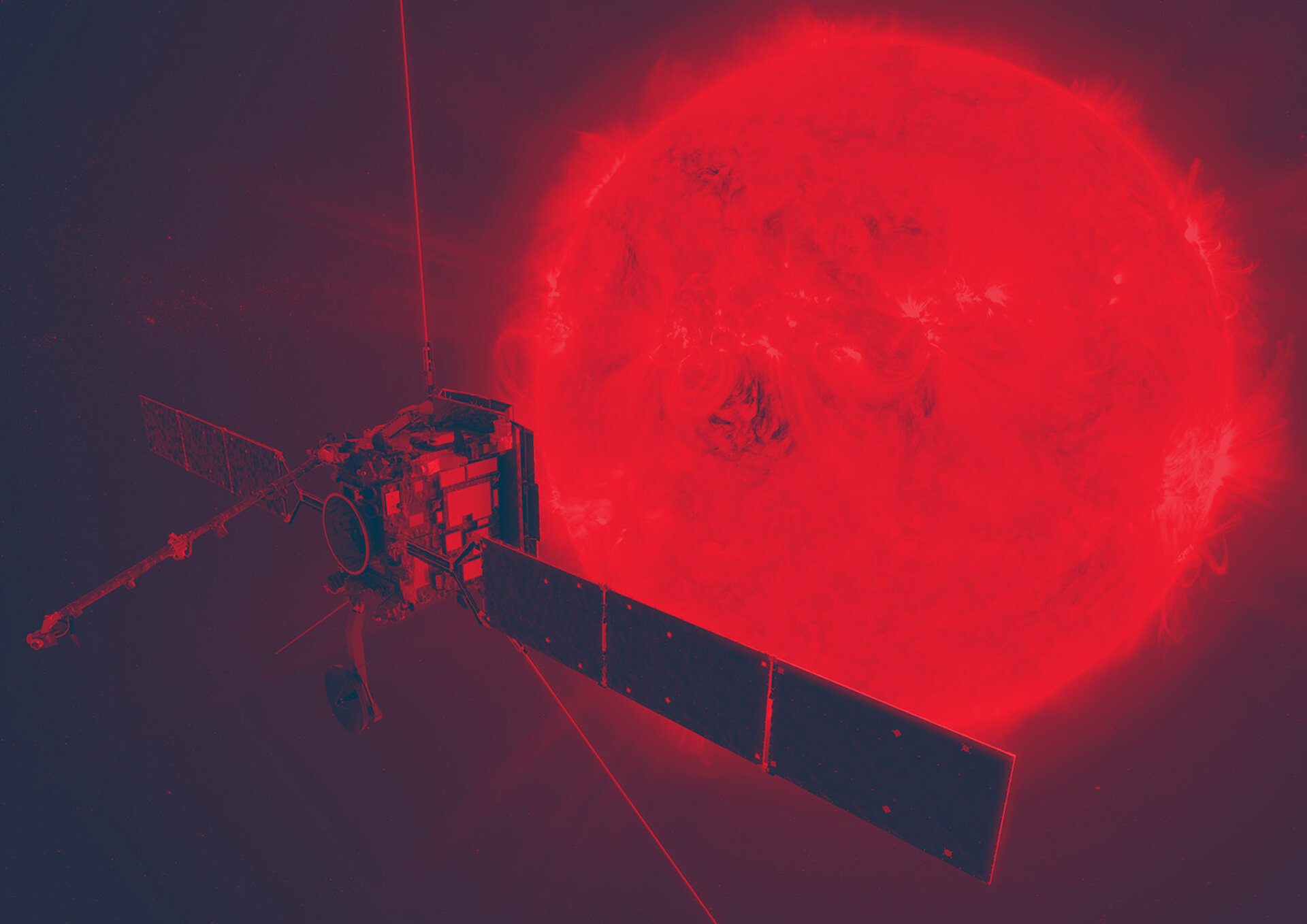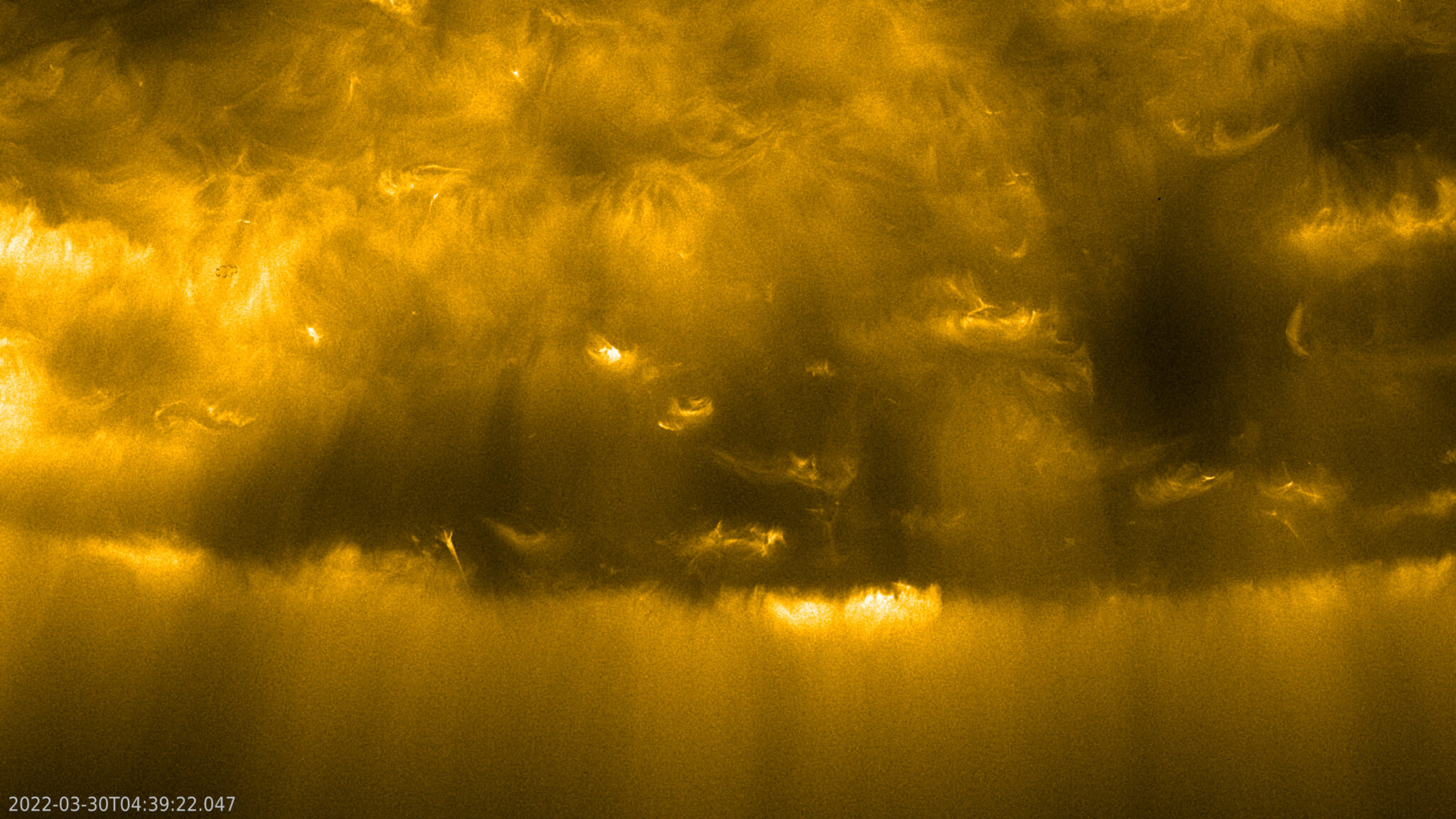The Solar Orbiter spacecraft sent to Earth several videos taken during its close passage near our star in March of this year. The resulting images reveal a lot of previously unseen details, including a curious geyser, which scientists called the “solar hedgehog”.
During the next orbit, when the Solar Orbiter will approach 1/3 of the distance between the Sun and the Earth, the spacecraft also captured the south pole of the Sun. This was the first time that any telescope, space or ground-based, received such detailed images of this region of the Sun. The South Pole, according to scientists, plays a key role in generating the solar magnetic field.

“The images are really breathtaking. Even if Solar Orbiter stops working tomorrow, I will be busy for many years trying to make sense of the huge amount of data collected,” said David Bergmans, a physicist at the Royal Observatory of Belgium and lead researcher of the Extreme Ultraviolet Imager instrument on board Solar Orbiter.
The Extreme Ultraviolet Imager camera is responsible for the most stunning images taken by the spacecraft launched in February 2020. The camera in high resolution shows phenomena in the lower layers of the Sun’s atmosphere – the area responsible for the generation of solar and coronal flares, which are emissions of magnetized plasma from the outer atmosphere, known as the corona.
Geyser “Solar hedgehog”
Among the previously unseen phenomena filmed around the close passage on March 26, there was a strange geyser of hot and cold gas emanating from the surface of the Sun in all directions, which scientists dubbed the “solar hedgehog”.
Stretching for 25 thousand kilometers, which is twice the diameter of the Earth, the “hedgehog” covers only a tiny part of the solar surface. These geysers are much larger than the mini solar flares called “bonfires” discovered during the first perihelion in June 2020. At that time, the Solar Orbiter was still in the so-called commissioning phase, and approached the star only half the distance from the Sun to the Earth.
South Pole
Images of the Sun’s south pole taken during a close pass are of particular interest to scientists studying the behavior of the Sun and its 11-year cycle of activity, periodic tides in the formation of sunspots, solar flares and eruptions. According to NASA, at the height of this cycle, the magnetic poles of the Sun turn over – the magnetic north becomes the south and vice versa. By measuring in detail what happens in the polar regions of the Sun, solar physicists hope to solve the mystery of this strange behavior.

Studying the poles of the Sun is one of the key tasks of the Solar Orbiter mission. In the later part of the mission, the spacecraft operators will deflect the spacecraft’s orbit from the plane of the ecliptic in which the planets rotate so that it can get a better view of the poles of our star.
Future Approaches
The close passage on March 26 came at a time of fairly intense solar activity. The spacecraft was in the firing line of several solar flares and coronal mass ejections, which subsequently caused geomagnetic storms and radio outages on Earth.
Solar Orbiter will make its next close pass to the Sun on October 13, 2022, approaching the star even closer than in March. This means that the probe will receive new, more detailed images of the Sun. Previous close passes of the spacecraft occurred at about half the distance from the Sun to the Earth.
Recall that earlier Solar Orbiter made a unique portrait of the Sun.
According to European Space Agency
Follow us on Twitter to get the most interesting space news in time
https://twitter.com/ust_magazine

